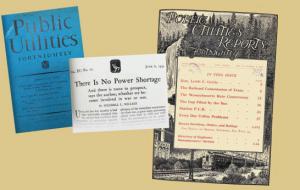Rate design will need to become more flexible, more duly discriminatory, more tailored to the diversity of consumers
Steve Mitnick is Editor-in-Chief of Public Utilities Fortnightly and author of the book “Lines Down: How We Pay, Use, Value Grid Electricity Amid the Storm.”
The price of electricity has a structure, what we practitioners call a rate structure. We toss around the terms rate structure, inclining blocks, cost causation, class cost allocation, etc. with ease. But consumers generally don't know why electric rates have a structure and are vexed by the resulting complexity in their monthly bill.

Though if you engage your brother-in-law or next door neighbor, and have them stop and think about it, they do understand that some goods and services have complicated pricing. While the gasoline station charges a flat amount per gallon, with a prominent sign shouting out the amount, the cost of other purchases we all make is not nearly as transparent, as simple to figure out.
Among the unpleasant aspects of a hospital stay is that the bill is a mesmerizing combination of line items, a few of them quite mysterious. Some of the charges are per use, often at astounding levels, like a dollar or more per aspirin. Some of the charges are per hour, like hundreds of dollars for every hour that a technician paid attention to you. Some of the charges are per day, like the hundreds of dollars per day that the hospital provided hospitality.
Some charges are fixed, immutable, seemingly not based on anything, like the amounts for administration. These handling charges are especially fuzzy and frustrating.

